So far in our series on the anatomy and physiology of the immune system, we’ve been running pretty much in parallel with medical textbooks, with an alternative slant here and there. But now, in our concluding segment, we progressively step outside the box and draw a clear line between the medical view of the immune system and the holistic view. And ultimately, we arrive at the primary point of separation:
Science views the immune system as the sum of its myriad complex parts. Based on the “scientific” view, if you can dig down deep enough into those individual parts and then down into their tiniest working components — protein molecules, enzymatic reactions, and DNA for example — all secrets will be revealed unto you, and you will be able to manufacture health out of disease. Alternative health practitioners, on the other hand, believe that the immune system is actually an integrated whole that is more than the sum of its parts. Instead of digging down, the key to understanding and optimizing the immune system is to step back and work with the whole, not its parts. And thousands of years of human history says that this approach can produce equally dramatic results.
In truth, there is value in both viewpoints. Just because something is in a peer reviewed journal and endorsed by scientists around the world does not actually guarantee its correctness or efficacy; 1 “Misconduct in science, An array of errors.” The Economist. 10 September 2011. Accessed 19 Sept 2011. <http://www.economist.com/node/21528593> and just because it’s not in a journal, does not negate its potential value. That said, since the medical community already spends billions of dollars a year researching and promoting the virtues of its own viewpoint, I will focus on the sadly underfunded holistic perspective.
Specifically we’re going to cover:
- Potential problems with the immune system
- Antibiotics, antivirals, and resistant infections
- Pathogen destroyers
- Immunomodulators
- Cytokine storms
- Understanding the holistic nature of the immune system — and how to use that understanding to optimize your immune function
Potential problems with the immune system
When everything is working well, your immune system is a miracle of nature, but for a number of reasons, problems can occur that may compromise its effectiveness. For example:
- The immune system becomes weakened and vulnerable to attack.
- The medical community understands the concept, but doesn’t think there is much you can do about it. With a few notable exceptions, they are dismissive of herbs, supplements, and even diet in regard to their effects on the immune system…and even health in general. On the other hand, complementary health relies on diet and immune boosters to make your immune system as strong as possible.
- The immune system is overwhelmed by an invader’s attack and loses the fight.
- We’re talking about very aggressive pathogens here, pathogens that have acquired legendary status for their ability to kill people. Smallpox, bubonic plague, and Ebola come to mind.
- The immune system becomes misprogrammed and loses the ability to identify invaders or mutated cells.
- Some cancers and viruses, for example, have the ability to hide from your immune system, or even shut it down so that it will not attack them. (I’ll talk more about this in a future newsletter series on cancer.)
- The immune system becomes misprogrammed and begins to mistakenly identify healthy body cells and organs as the enemy and attacks them (autoimmune diseases).
- The invader is “smarter” than your immune system and figures out a way around it.
- All viruses and bacteria have this capability, but some are better at it than others. In many cases, it is possible for alternative methods to help here, where medical science has so far failed. (In a moment, we will explore this in more detail.)
- The immune system is compromised or missing some key component at birth.
- The cells of your immune system turn malignant — leukemia — and instead of protecting your body become its chief enemy.
 Of these problems, the first four are, in most cases, correctable. Only when the body is born without the ability to produce a key component or if they turn cancerous (leukemia) are our options truly limited, but not necessarily hopeless. Again, we’ll talk more about leukemia in another newsletter when we focus on cancer. However, for now, there’s one key concept worth noting. It is important to understand that leukemia, in all its varieties, is a disease of the bone marrow, which results in unrestrained proliferation of immature white blood cells. Traditional treatments for leukemia involve heavy doses of chemotherapy to destroy your bone marrow and then replace it, which is not foolproof. The treatment itself certainly kills some people, and the reoccurrence of even more aggressive, metastasized strains of the disease are more common than doctors would like to admit. And even for those who survive, there are long term health consequences as a result of the treatment. To be sure, for one form of leukemia, CML, the drug Gleevac has been a life saver for many people — capable of holding the disease in check indefinitely. But it doesn’t cure the disease; again, it merely holds it in check as long as you continue to take the drug. So the question of the moment has to be, “If leukemia is a disease of the immune system itself, can that infected system actually be used to cure itself?”Now you might think that since it’s the immune system itself that’s compromised in leukemia that it would be impossible for the immune system to eliminate the disease — but you would be wrong. Alternative healers have been doing it for years — saving the lives of many leukemia patients who had already tried the medical route…unsuccessfully. And as I pointed out in Part 2 of this series, a new treatment for leukemia that looks to do the same thing — harness a person’s own immune system to eliminate the disease — has demonstrated unprecedented success in early trials. And when you think about it, this not only validates the virtues of scientific research, it also validates the complementary approach, simply by mimicking it.
Of these problems, the first four are, in most cases, correctable. Only when the body is born without the ability to produce a key component or if they turn cancerous (leukemia) are our options truly limited, but not necessarily hopeless. Again, we’ll talk more about leukemia in another newsletter when we focus on cancer. However, for now, there’s one key concept worth noting. It is important to understand that leukemia, in all its varieties, is a disease of the bone marrow, which results in unrestrained proliferation of immature white blood cells. Traditional treatments for leukemia involve heavy doses of chemotherapy to destroy your bone marrow and then replace it, which is not foolproof. The treatment itself certainly kills some people, and the reoccurrence of even more aggressive, metastasized strains of the disease are more common than doctors would like to admit. And even for those who survive, there are long term health consequences as a result of the treatment. To be sure, for one form of leukemia, CML, the drug Gleevac has been a life saver for many people — capable of holding the disease in check indefinitely. But it doesn’t cure the disease; again, it merely holds it in check as long as you continue to take the drug. So the question of the moment has to be, “If leukemia is a disease of the immune system itself, can that infected system actually be used to cure itself?”Now you might think that since it’s the immune system itself that’s compromised in leukemia that it would be impossible for the immune system to eliminate the disease — but you would be wrong. Alternative healers have been doing it for years — saving the lives of many leukemia patients who had already tried the medical route…unsuccessfully. And as I pointed out in Part 2 of this series, a new treatment for leukemia that looks to do the same thing — harness a person’s own immune system to eliminate the disease — has demonstrated unprecedented success in early trials. And when you think about it, this not only validates the virtues of scientific research, it also validates the complementary approach, simply by mimicking it.
Antibiotics, antivirals, and resistant infections
The medical community’s arsenal of immune builders and antipathogens is somewhat limited. We’ve talked about some of them such as interleukin and gamma globulin injections, but when push comes to shove, 90% of the medical arsenal when it comes to immunity is comprised of antibiotics, with another 5% comprised of antivirals. (In truth, there are actually very few effective medical antivirals.) The discovery and use of these drugs has represented one of the greatest achievements of medical science over the last hundred years. Unfortunately, thanks to arrogance and misuse, resistant strains of bacteria and viruses are proliferating like fleas in a one-star hotel. And in truth, this trend may be almost impossible to stop since it is the result of the simple rules of evolution. (For the sake of simplicity, we’ll focus on bacteria, although the same rules apply to viruses.)
 Any population of organisms, bacteria included, naturally includes variants with unusual traits — in this case, the ability to withstand a particular antibiotic’s attack. When this antibiotic is used and kills the defenseless bacteria, it leaves behind those few bacteria that can resist it. These renegade variants then multiply, increasing their numbers a million fold in a single day, instantly becoming the new dominant variant. In other words, the very act of using an antibiotic creates the opportunity for resistant strains to flourish and become dominant.
Any population of organisms, bacteria included, naturally includes variants with unusual traits — in this case, the ability to withstand a particular antibiotic’s attack. When this antibiotic is used and kills the defenseless bacteria, it leaves behind those few bacteria that can resist it. These renegade variants then multiply, increasing their numbers a million fold in a single day, instantly becoming the new dominant variant. In other words, the very act of using an antibiotic creates the opportunity for resistant strains to flourish and become dominant.
It’s important to understand that antibiotics vary in the way they kill microbes. Penicillin, for example, kills bacteria by attaching to their cell walls and then breeching those walls, thus killing the bacteria. Erythromycin, tetracycline, and streptomycin, on the other hand, kill bacteria by attacking the structures inside the bacteria (ribosomes) that allow them to make proteins, thus also destroying the bacteria. Because each antibiotic is a single compound and one-dimensional in its approach, it’s not that hard for microbes to “evolve” around such attacks. For example, microbes resistant to penicillin have developed cell walls that prevent the penicillin from binding. Similarly, other variants prevent antibiotics from binding to ribosomes, thus neutralizing the effect of those antibiotics. Using antibiotics in combination can help in the short term, but it also accelerates the breeding of superbugs, resistant to many types of drugs.
Where it gets really frightening, though, is that bacteria swap genes like Facebook members swap friends — which brings us to vancomycin, until a few years ago, the antibiotic of last resort. When all other antibiotics failed, doctors knew they could count on vancomycin. But then vancomycin resistance was discovered in a common hospital microbe, enterococcus. By 1991, thirty-eight hospitals in the United States reported the variant. Just one year later, vancomycin-resistant staph bacteria were observed with the same gene. What this means is that not only are bacteria programmed to “evolve” defenses against antibiotics, but once they produce such a defense, they are also programmed to rapidly share that defense with other strains of bacteria, thus rapidly spreading the resistance through the entire bacterial world. That is truly scary!
And viruses work much the same way, but even more quickly since their DNA is even simpler — more primitive, more malleable as it were.
How pharmaceuticals destroy nature
If all that pharmaceutical antibiotics and antivirals did was negate themselves and breed superbugs over time, that would be bad enough. Unfortunately, their effect is far more damaging. Since many pharmaceutical drugs are drawn from nature, they also undermine nature. Let me give you an example.
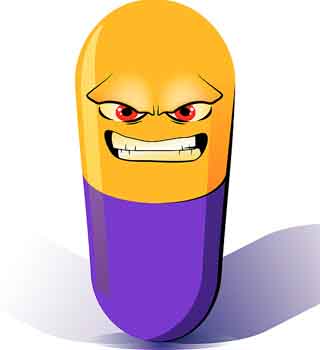 The Chinese star anise plant has a long history as a healing herb — for digestive problems, women’s health, and for treating colds and flu’s. The Swiss pharmaceutical company, Roche, focused in on the cold and flu benefit and then “subtracted out” all of the “extraneous” biochemicals in the plant until they settled on one component, shikimic acid, that they said was responsible for the star anise plant’s ability to help with colds and flu’s. From shikimic acid, they synthesized oseltamivir (for patent purposes), and thus was born Tamiflu. This is a subtractive process. You eliminate everything “extraneous” and get down to one single active ingredient. Of course, there are major problems with the magic bullet approach — in this case, that Tamiflu doesn’t really work that well and for all the reasons that we just discussed above, flu viruses are easily able to mutate around the single magic bullet ingredient in Tamiflu.
The Chinese star anise plant has a long history as a healing herb — for digestive problems, women’s health, and for treating colds and flu’s. The Swiss pharmaceutical company, Roche, focused in on the cold and flu benefit and then “subtracted out” all of the “extraneous” biochemicals in the plant until they settled on one component, shikimic acid, that they said was responsible for the star anise plant’s ability to help with colds and flu’s. From shikimic acid, they synthesized oseltamivir (for patent purposes), and thus was born Tamiflu. This is a subtractive process. You eliminate everything “extraneous” and get down to one single active ingredient. Of course, there are major problems with the magic bullet approach — in this case, that Tamiflu doesn’t really work that well and for all the reasons that we just discussed above, flu viruses are easily able to mutate around the single magic bullet ingredient in Tamiflu.
So how does that undermine nature? To put it simply, Roche has managed to take a natural cold and flu remedy that viruses have not been able to evolve around since the dawn of man, and by reducing it to a single active component, breed multiple strains of resistant flu viruses in short order. Astoundingly, they have managed to negate one of nature’s best antivirals in less than a decade — truly an amazing achievement.
What Can Be Done?
When you think about how quickly pathogens evolve around antibiotics, which are created by the greatest medical minds in the world today, it’s more than amazing that they have been unable to do so against most natural antipathogens, such as garlic, olive leaf, and oil of oregano, even given thousands of years to do so (not counting those such as star anise that have been nullified through the “unnatural” intervention of the pharmaceutical industry). How can that be? Actually, it’s quite simple — or more accurately, quite complex. While drugs, as we have discussed, are essentially one-dimensional (single-component), which allows microbes an easier path to evolve around them, natural antipathogens often contain dozens of biochemicals. Not all of them are necessarily “active” when tested in isolation, but many of the so-called inactive components potentiate the active ones and offer therapeutic combinations numbering in the thousands. This presents a complexity that makes it virtually impossible for microbes to work around.
Take garlic. For a long time, many people thought there was only one active component in garlic, allicin (in fact, many supplement companies still promote that concept). However, researchers now know that allicin is rapidly oxidized, breaking down into more than 100 biologically active, sulfur-containing compounds. (While allicin still serves as a marker of garlic’s potency, S-allylcysteine and other sulfur compounds are now recognized as the most therapeutically active ingredients.) How many possible therapeutic combinations can you get from garlic’s 100 biologically active compounds? The number is literally beyond counting; the complexity is far more than simple pathogens can evolve around. And that’s the secret: when you then combine several natural substances in one formula, the combinations of bioactive compounds are astronomical; beyond the ability of microbes to circumvent…unless assisted by pharmaceutical companies.
The widespread use (and misuse) of pharmaceutical antibiotics and antivirals has led us to a world filled with growing numbers of drug-resistant “superbugs.” Eventually, one of them will unleash a devastating worldwide plague that, by definition, will be resistant to all that medical science can throw against it. At that moment, natural antipathogens may offer the only viable defense.
Pathogen Destroyers
Pathogen destroyers represent an alternative, complementary route to assisting your immune system. They don’t build immune function as the immune boosters that we discussed in our last newsletter do. Instead, they “free up” immune function by directly destroying pathogens in the body that would otherwise occupy the attention of your immune system. They function as natural antibiotics and antivirals.
Incubation phase
Before we talk about specific antipathogens, we need to talk about the optimum time to use them: the incubation phase. This is the period of time between exposure to a pathogenic organism and when the classic full-blown symptoms and signs of the disease first become apparent. For the flu, this period can run from one to three days. For the common cold, two to five days. And for mononucleosis, it can take as long as 42 days. Everyone knows the symptoms for the common diseases. When you have a full blown cold or flu, you know it. That’s when most people take action. Unfortunately, that’s too late. At that point, all you can hope to do by using antipathogens is to shorten the duration of your illness a few days. After all, your immune system is already fully on the job.
But if you can recognize the early symptoms of an illness that manifest during the incubation phase, you can kill the invaders before they get established, and before your immune system even breaks a sweat. And in truth, we all know those symptoms; we just rationalize them away while they’re happening. We’re talking about the scratchy throat that precedes a sore throat, the sniffles that precede a runny nose, and the dull body ache that precedes a full blown fever. These are the symptoms that you rationalize as:
- I’m really tired; I need to catch some extra sleep.
- I shouldn’t have eaten that extra ice cream; I can feel it in my throat.
- My allergies are kicking in; my nose is starting to plug up.
- I think a strained myself cleaning the house today; my body aches.
- The kids drove me crazy; I have a dull headache.
But it’s important not to ignore these early symptoms. Stopping the flu, for example, in the incubation phase is much, much, much easier than getting rid of it once it has established itself. If you hit it hard during incubation, you can be almost 100% effective in stopping it cold (all puns intended). If you allow it to incubate and fully manifest, it will take you several days to beat it back. It’s true that you can significantly cut the time of your sickness, but you will still be sick for several days, and you will need to keep taking the formulas for four to five days after you feel better to make sure you clear the virus from your body and it doesn’t reassert itself. Definitely, it’s better to shut it down during incubation. And what’s the worst that happens if you read it wrong — you end up having some garlic and olive leaf extract a couple of times because the kids really did drive you crazy. Is that too high a price to pay for almost never getting sick?
One other thing to keep in mind is that sometimes you’re in situations where you don’t even have to wait for any symptoms to appear to take prophylactic measures. For example, whenever I take a trip that involves traveling on an airplane, or that puts me in contact with large numbers of people during cold and flu season, I automatically use antipathogens before bed and upon rising every day of the trip — one capsule each of olive leaf extract, oil of oregano, and one capsule of AHCC to keep my immune system primed. Then as soon as I get home, I’ll down an entire bottle of my own garlic based liquid formula just to make sure. (I tend not to bring the garlic formula on trips in case it breaks in the suitcase.) I have not gotten sick once while traveling when following this routine.
Cytokine Storm
 We briefly mentioned cytokine storms above. Since they are directly connected to pathogen destroyers, let’s revisit them for a moment now.
We briefly mentioned cytokine storms above. Since they are directly connected to pathogen destroyers, let’s revisit them for a moment now.
In a cytokine storm, the immune system sees a virus that it has never seen before, and it goes nuts, whipping itself into a frenzy in response to the invading virus. A biochemical cascade of immune cells and immune system bio-chemicals such as interferon, interleukin, and monokines — collectively known as cytokines — literally pours into the lungs. The subsequent damage to the lung tissue caused by these cells and bio-chemicals leads to a condition called acute respiratory distress syndrome (ARDS) that literally chews up a person’s lung tissue, which causes fluid to pour into the lungs, ultimately causing the victim to suffocate as a result of their own disease-fighting chemistry.
Most common flu’s do not produce cytokine storms. Most flu’s kill people who have weak immune systems by eventually opening the door for pneumonia, which is what actually kills them. That’s why health authorities specify that the very old and very young and those with weak immune systems are prime candidates for annual flu vaccines (even though they don’t work very well). But swine flu, avian flu, and most notably, the great flu pandemic of 1918 are different animals. They don’t kill through pneumonia. They kill you by unleashing a cytokine storm, which means that it is your own immune system that kills you. And this means that the most vulnerable are not the very old and the very young but healthy adults and pregnant women, people who have very strong immune systems. And that means that the stronger your immune system, the greater the danger — the exact opposite of standard flu strains.
Does that mean that you should weaken your immune system to protect against the flu? Not at all! That would be silly. Strong immune systems are good for many, many reasons. However, it does mean that you want natural antipathogens on hand in your medicine cabinet to use at the first sign of a cold or flu. It will protect you against standard flu, and if you perchance catch a rogue strain of avian or swine flu, the antipathogens will kill enough of the virus to take your viral load down to the point that your immune system can do its job with no risk of being forced into a cytokine storm. You get the best of all possible worlds.
One thing to keep in mind is that you probably want to keep a supply of these antipathogens in your medicine cabinet because there is likely to be a run on them at the first hint of a viral pandemic. We saw just such a run on Tamiflu during the avian and swine flu scares — even though they provide little protection. And we saw a similar run on iodine tablets after the meltdown at the Fukushima Daiichi nuclear plant in Japan.
Now let’s take a look at some of the natural antipathogens at your disposal.
Olive Leaf Extract
The olive tree (Olea europaea) is native to the Mediterranean region. Olive leaf extract has a long history of use against illnesses in which microorganisms play a major role. In more recent years, studies of olive leaf extracts (containing oleuropein, calcium elenolate, and/or hydroxytyrosol) were effective in eliminating a very broad range of organisms, including bacteria, viruses, parasites, yeast, mold, and fungi. 2 Pio Maria Furneri, Anna Piperno, Antonella Sajia, and Giuseppe, Antimycoplasmal Activity of Hydroxytyrosol, Antimicrob Agents Chemother. 2004 December; 48(12): 4892–4894. <http://www.ncbi.nlm.nih.gov/pmc/articles/PMC529223/> , 3 Harold E. Renis, Inactivation of Myxoviruses by Calcium Elenolate. Antimicrobial Agents and Chemotherapy Aug. 1975, p. 194-199. < http://aac.asm.org/cgi/reprint/8/2/194.pdf>
Oil of wild mountain oregano
Oregano (Origanum vulgare) is a perennial herb native to Europe, the Mediterranean, and central Asia. Oil of wild mountain oregano is antiviral, antibacterial, antifungal, and antiparasitic. It also has strong antioxidant and anti-inflammatory effects. The key component appears to be an isomeric phenol known as carvacrol. However, as is typical with natural products, the whole oil is more effective than its isolated parts. 4 Manohar V, Ingram C, Gray J, Talpur NA, Echard BW, Bagchi D, Preuss HG. “Antifungal activities of origanum oil against Candida albicans.” Mol Cell Biochem. 2001 Dec;228(1-2):111-7. <http://www.ncbi.nlm.nih.gov/pubmed/11855736> In dilutions as low as 1 to 50,000, it can destroy a wide range of pathogens, including Candida albicans, aspergillus mold, staphylococcus, Campylobacter, klebsiella, E. coli, giardia, pseudomonas, and proteus. 5 Afroditi Sivropoulou, Eleni Papanikolaou, Constantina Nikolaou, Stella Kokkini, Thomas Lanaras, and Minas Arsenakis. “Antimicrobial and Cytotoxic Activities of Origanum Essential Oils.” J. Agric. Food Chem., 1996, 44 (5), pp 1202–1205 <http://pubs.acs.org/doi/abs/10.1021/jf950540t> , 6 Jennifer Billing and Paul W. Sherman. “Antimicrobial Functions of Spices: Why Some Like It Hot.” The Quarterly Review of Biology, Vol. 73, No.1, March 1998. <http://www.jstor.org/pss/3036683> Another phenol constituent of oregano, thymol, helps boost the immune system. 7 Walter BM, Bilkei G. “Immunostimulatory effect of dietary oregano etheric oils on lymphocytes from growth-retarded, low-weight growing-finishing pigs and productivity.” Tijdschr Diergeneeskd. 2004 Mar 15;129(6):178-81. <http://www.ncbi.nlm.nih.gov/pubmed/15052959>
Habanero and horseradish
Habanero (Capsicum chinense Jacquin) and horseradish (Armoracia rusticana) are stimulants that quicken and excite the body. They energize the body, stimulating its defenses against invading viruses, and help to carry blood to all parts of the body. They are also diaphoretics and thus help raise the temperature of the body, which increases the activity of the body’s immune system.
Horseradish, in particular, contains volatile oils that are similar to those found in mustard: glucosinolates (mustard oil glycosides), gluconasturtiin, and sinigrin. In test tubes, the volatile oils in horseradish have shown antibiotic properties, which may account for its effectiveness in treating throat and upper respiratory tract infections. At levels attainable in human urine after taking the volatile oil of horseradish, the oil has been shown to kill bacteria that can cause urinary tract infections; one early trial found that horseradish extract may be a useful treatment for people with urinary tract infections. 8 Kienholz VM, Kemkes B. The anti-bacterial action of ethereal oils obtained from horse radish root (Cochlearia armoracia L.). Arzneimittelforschung 1961;10:917–8 [in German].
Garlic and onions
Although the previous pathogen destroyers are extremely potent, garlic (Allium sativum) is my favorite — for the simple reason that it is the “kindest” to the beneficial bacteria in the intestinal tract. In addition, as we discussed earlier, garlic is one of the best infection fighters available for both bacterial and viral infections. 9 MM Fani, J Kohanteb, M Dayaghi. “Inhibitory activity of garlic (Allium sativum) extract on multidrug-resistant Streptococcus mutans.” JISPPD 2007 Vol: 25 Issue: 4 Page: 164-168 <http://www.jisppd.com/article.asp?issn=0970-4388;year=2007;volume=25;issue=4;spage=164;epage=168;aulast=Fani> , 10 Ankri S, Mirelman D. “Antimicrobial properties of allicin from garlic.” Microbes Infect. 1999 Feb;1(2):125-9. <http://www.ncbi.nlm.nih.gov/pubmed/10594976> , 11 Sasaki J, Kita T, Ishita K, Uchisawa H, Matsue H. “Antibacterial activity of garlic powder against Escherichia coli O-157.” J Nutr Sci Vitaminol (Tokyo). 1999 Dec;45(6):785-90. <http://www.ncbi.nlm.nih.gov/pubmed/10737231> Garlic also possesses the ability to stimulate the activity of macrophages to engulf foreign organisms, such as viruses, bacteria, and yeast. Furthermore, garlic increases the activity of the helper T-cells. 12 Liu CT, Su HM, Lii CK, Sheen LY. “Effect of supplementation with garlic oil on activity of Th1 and Th2 lymphocytes from rats.” Planta Med. 2009 Feb;75(3):205-10. Epub 2009 Jan 9. <http://www.ncbi.nlm.nih.gov/pubmed/19137499> Garlic may be particularly effective in treating upper respiratory viral infections, due to its immune-enhancing properties and its ability to clear mucus from the lungs. It is also effective against streptococcus and staphylococcus bacteria — and even bacillus anthracis, which produces the poison anthrax. 13 “Garlic as an antibiotic.” The Garlic Information Centre. Accessed 11 Sept 2011. <http://www.garlic.mistral.co.uk/antibiotic.htm>
Everything that’s been said about garlic goes for onions too. Onions and garlic share many of the same powerful sulfur-bearing compounds that work so effectively as antiviral and antibacterial agents.
Colloidal silver
Colloidal silver is a suspension of submicroscopic metallic silver particles in a colloidal base. Although colloidal silver can be an effective anti-pathogen, I have several concerns. Concentrations can vary wildly in supplemental forms, and in many products, the silver particles are too big and not a true colloidal suspension, meaning that, over time, they drop out of suspension and the concentration in the liquid lessens. When it is at sufficient strength to be effective, colloidal silver is indiscriminate — that is, it kills the good intestinal bacteria as well the bad. And it can, if taken in sufficient quantity, cause argyra, a “potentially” irreversible blue/gray discoloration of the skin. (Although rare as the result of using colloidal silver, it has nevertheless been documented.)
Certainly, one of the most publicized cases of argyra is Stan Jones who consumed extremely high amounts of home-made colloidal silver. As you can see, he is a living representative of the American Civil War — solidly blue/gray.

However, to be fair, he drank at least eight ounces a day of his highly concentrated brew every single day for more than two years. In addition to the high quantities he consumed, it is also likely that the concentration of silver particles in his home brew (based on his descriptions of his process for making colloidal silver) was incredibly high. All in all, it makes his case more likely an exception rather than a rule. Nevertheless, it does present a caution.
It should be noted that new versions of silver products, such as Silver Sol, claim to have eliminated the potential for argyra, but that claim has not been tested over time. So, in the end, my bottom line recommendation (and I know this will anger many colloidal silver advocates) is to restrict colloidal silver to external use except for special occasions. Using it for a few days if you come down with the flu is not going to be a problem. Drinking a large glass every day as a prophylactic measure is probably less advisable. And be sure to follow any internal use with a good probiotic supplement. Silver tends to kill all bacteria — both good and bad.
Liquid zinc
Like colloidal silver, liquid ionic zinc is antibacterial and antiviral, but without the potential toxicity issues found with silver. The mineral zinc is found in all body fluids, including the moisture in the eyes, lungs, nose, urine, and saliva. Proper zinc levels offer a defense against the entrance of pathogens. In the 1800s, surgeons used zinc as an antiseptic/antibiotic after surgery, and they noted its amazing healing properties: wounds would heal, at times, as quickly as twenty-four hours after an operation, without swelling, and scarring was barely noticeable after a short period of time. 14 Balbina A. Johnson and Frank L. Meleney. “The Antiseptic and Detoxifying Action of Zinc Peroxide on Certain Surgical Aerobic, Anaerobic and Micro-Aerophilic Bacteria.” Ann Surg. 1939 June; 109(6): 881–911. <http://www.ncbi.nlm.nih.gov/pmc/articles/PMC1391281/pdf/annsurg00507-0002b.pdf> Because zinc moves through all the fluids in the body, it creates a defense against infection-causing bacteria and viruses trying to enter the body and stops bacterial and viral replication. In other words, to be effective, it must be in a liquid form. If you take zinc tablets, your body must convert them. If you take your zinc in a liquid form, it’s already in the form your body needs. The exception, of course, is when used externally as in zinc ointment, which is used to treat everything from diaper rash to HSV1/HSV2 cold sores. 15 Max Arens1,Sharon Travis. “Zinc Salts Inactivate Clinical Isolates of Herpes Simplex Virus In Vitro.” J Clin Microbiol. 2000 May; 38(5): 1758–1762. <http://www.ncbi.nlm.nih.gov/pmc/articles/PMC86580/>
Immunomodulators
In medical terminology, an immunomodulator is a drug or natural substance that adjusts the immune response to a desired level, through either immunopotentiation, immunosuppression, or induction of immunological tolerance (stopping it from attacking a particular antigen). In other words, as with most medical thinking, immunomodulation is not about balancing the immune system, but about forcing it to behave in certain ways.
In contrast, in the world of natural healing, immunomodulators are thought of as nutraceuticals that can “intelligently” regulate your immune system, boosting a weak system or calming down an overactive one. If a person with low immune function takes an immunomodulator, it will help raise their immunity. Likewise, if a person with a hyperactive immune system takes the same immunomodulator, it will tend to calm their immune system down and normalize it. It appears that natural immunomodulators accomplish this, at least to some degree, by naturally increasing the body’s production of messenger molecules to regulate and correct defects in memory T-cells. In that sense, true immunoregulators are adaptogenic — capable of modifying the immune system, either up or down, as needed. By using immunomodulators, you can retrain the immune system to respond more efficiently and to not overreact (as happens in the case of people with autoimmune disorders). Some of the better immunomodulators include:
- L-carnosine 16 Nagai K, Suda T. “Immunoregulative effects of carnosine and beta-alanine. [Article in Japanese.] Nihon Seirigaku Zasshi. 1986;48(6):564-71. <http://www.ncbi.nlm.nih.gov/pubmed/3097300>
- Cetyl myristoleate (CMO) 17 Hunter KW, Jr. Gault RA, Stehouwer JS, Tam-Chang SW. “Synthesis of cetyl myristoleate and evaluation of its therapeutic efficacy in a murine model of collagen-induced arthritis.” Pharmacol Res. 2003 Jan;47(1):43-7. <http://www.ncbi.nlm.nih.gov/pubmed?term=12526860%20>
- Colostrum 18 Waaga-Gasser AM. “Bovine colostrum–therapeutic synergism involving immunomodulation, nutritional supplementation and antibacterial action?” Int J Clin Pharmacol Ther. 2007 Apr;45(4):191-2. <http://www.ncbi.nlm.nih.gov/pubmed/17474537>
- Ginseng 19 Tae-Soo Lim, Keun Na, Eun-Mi Choi, Jae-Youn Chung and Jae-Kwan Hwang. “Immunomodulating Activities of Polysaccharides Isolated from Panax ginseng.” Journal of Medicinal Food. April 2004, 7(1): 1-6. <http://www.liebertonline.com/doi/abs/10.1089/109662004322984626>
- Astragalus 20 William Chi Shing Choa, Kwok Nam Leungb. “In vitro and in vivo immunomodulating and immunorestorative effects of Astragalus membranaceus.” Journal of Ethnopharmacology. Volume 113, Issue 1, 15 August 2007, Pages 132-141. <http://www.sciencedirect.com/science/article/pii/S0378874107002668>
- Rhodiola 21 Li HX, Sze SC, Tong Y, Ng TB. “Production of Th1- and Th2-dependent cytokines induced by the Chinese medicine herb, Rhodiola algida, on human peripheral blood monocytes.” J Ethnopharmacol. 2009 Jun 22;123(2):257-66. Epub 2009 Mar 20. <http://www.ncbi.nlm.nih.gov/pubmed/19429370>
Conclusion
Too many people think of the immune system as something existing in isolation. That’s a huge mistake. In truth, your body is composed of a series of integrated systems — and, as such, is the sum of those systems and is only as strong as the weakest of them. Let’s take a quick walk through the Baseline of Health Program and see how each system impacts the immune system.
- How good can your immune system be (even taking all the supplements you want) if your primary elimination system, your colon, is not functioning properly. A substantial portion of your immune system then has to combat the effects of self-toxicity. Clean up your intestinal tract and you free up your immune system.
- By killing off invading pathogens and producing immune boosting bio-chemicals such as transfer factor and lactoferrin, beneficial bacteria are responsible for 60-70% of your immune system’s activity. Using a good probiotic supplement can substantially boost your immune system.
- Using digestive enzymes with your meals and supplementing with proteolytic enzymes between meals significantly reduces the incidence of circulating immune complexes (CICs), thus taking enormous stress off the complementary immune system and reducing the chances of autoimmune disorders.
- Proper diet and nourishment boost your immune system. Each immune cell in your body is manufactured from the food you eat, so a nutritionally deficient diet means functionally deficient immune cells. A good vitamin/mineral supplement enhances the production of your body’s immune cells.
- A full-spectrum antioxidant boosts the immune system in multiple ways. Just one example is the spice curcumin: it can increase white blood cell count by 50 percent in just twelve days. 22 S. Antony, R. Kuttan, and G. Kuttan. “Immunomodulatory Activity of Curcumin.” Immunological Investigations. 1999, Vol. 28, No. 5-6 , Pages 291-303.” <http://informahealthcare.com/doi/abs/10.3109/08820139909062263>
- Every tenth of a point that your general body pH falls below its optimum dramatically impacts both your primary immune system and the complement system. Low pH and disease, including cancer, go hand in hand. Shift the emphasis in your diet away from meat, dairy, grains, and sugars (which are acid forming in your body) more towards fresh vegetables, which are alkalinizing. Think Mediterranean Diet.
- Cleaning out the liver with an effective flush and rebuilding program improves its ability to produce immune factors and remove bacteria from the blood. Cleaning out the blood with an herbal blood cleanser and balancing your blood’s pH also helps to improve immune function.
- Daily use of supplement formulations comprised of the herbs and nutraceuticals discussed in Part 2 of this series can significantly enhance the immune system across the board. Note: you only want to optimize your immune system, or keep it slightly more up-regulated than normal. You don’t want to overdo it. Go too far and it can cost you in several ways.
- Obviously, if your immune system is too hyperactive, you increase the risk of autoimmune disorders. However, in healthy people, that risk is marginal.
- Of greater concern is the holistic understanding, once again, that your body is an integrated whole. If your body puts too many resources into pumping up its immune system, it will end up having to shift some of those resources from other parts of the body.
- Make sure you have several pathogen destroyers as described above on hand for use at the first sign of oncoming illness. As we discussed, it is much easier to stop a viral or bacterial infection during the incubation stage (when you are experiencing the first symptoms) then if you wait until it’s full blown. Also, using pathogen destroyers to take down the viral load, throttles back the immune response and eliminates the chances of a cytokine storm. Incidentally, and not to panic you, both the avian flu and swine flu are currently staging comebacks in mutated forms, although neither one represents a major threat at the moment. 23 Media Centre. “Bird Flu rears its head again.” 29 Aug 2011.Food and Agriculture Organization of the United Nations. Accessed 13 Sept 2011. <http://www.fao.org/news/story/en/item/87196/icode/> As the old saying goes, “Gone but not forgotten.” Ahh, reverse that!
- Remember to use the immunomodulators to keep your immune system balanced. You don’t want your immune system to blow too hot or too cold.
- Keep in mind that the primary entry point for most pathogens is via your eyes, nose, and mouth through contact with your hands. Your hands pick up potential threats by virtue of contact with other people (shaking hands, for example) and with objects (touching doorknobs, computer keyboards, and telephones). Regular washing of the hands throughout the day with regular soap and water can take a considerable amount of stress off the immune system.
- One of the primary benefits of regular exercise is an optimized immune system. However, overly strenuous exercise actually has the reverse effect, not to mention making you stupid, so don’t overdo it.
- And find ways to reduce stress — mediation, relaxing walks, massages, whatever. As I have discussed in some detail in Lessons from the Miracle Doctors and in many blogs, stress compromises your immune system. Or check out my radio show discussion about how stress and depression affect your health.

As you can see, virtually every system in the body impacts the immune system. You truly are a holistic entity — only as strong as your weakest link. The Baseline of Health Program is designed to enhance the immune system at every level and in every system in the body. Use it.
Click below if you’ve missed any part of this Immunity series:
Anatomy and Physiology of the Immune System, Part 1
Anatomy and Physiology of the Immune System, Part 2
Anatomy and Physiology of the Immune System, Part 3
Anatomy and Physiology of the Immune System, Part 4
References
| ↑1 | “Misconduct in science, An array of errors.” The Economist. 10 September 2011. Accessed 19 Sept 2011. <http://www.economist.com/node/21528593> |
|---|---|
| ↑2 | Pio Maria Furneri, Anna Piperno, Antonella Sajia, and Giuseppe, Antimycoplasmal Activity of Hydroxytyrosol, Antimicrob Agents Chemother. 2004 December; 48(12): 4892–4894. <http://www.ncbi.nlm.nih.gov/pmc/articles/PMC529223/> |
| ↑3 | Harold E. Renis, Inactivation of Myxoviruses by Calcium Elenolate. Antimicrobial Agents and Chemotherapy Aug. 1975, p. 194-199. < http://aac.asm.org/cgi/reprint/8/2/194.pdf> |
| ↑4 | Manohar V, Ingram C, Gray J, Talpur NA, Echard BW, Bagchi D, Preuss HG. “Antifungal activities of origanum oil against Candida albicans.” Mol Cell Biochem. 2001 Dec;228(1-2):111-7. <http://www.ncbi.nlm.nih.gov/pubmed/11855736> |
| ↑5 | Afroditi Sivropoulou, Eleni Papanikolaou, Constantina Nikolaou, Stella Kokkini, Thomas Lanaras, and Minas Arsenakis. “Antimicrobial and Cytotoxic Activities of Origanum Essential Oils.” J. Agric. Food Chem., 1996, 44 (5), pp 1202–1205 <http://pubs.acs.org/doi/abs/10.1021/jf950540t> |
| ↑6 | Jennifer Billing and Paul W. Sherman. “Antimicrobial Functions of Spices: Why Some Like It Hot.” The Quarterly Review of Biology, Vol. 73, No.1, March 1998. <http://www.jstor.org/pss/3036683> |
| ↑7 | Walter BM, Bilkei G. “Immunostimulatory effect of dietary oregano etheric oils on lymphocytes from growth-retarded, low-weight growing-finishing pigs and productivity.” Tijdschr Diergeneeskd. 2004 Mar 15;129(6):178-81. <http://www.ncbi.nlm.nih.gov/pubmed/15052959> |
| ↑8 | Kienholz VM, Kemkes B. The anti-bacterial action of ethereal oils obtained from horse radish root (Cochlearia armoracia L.). Arzneimittelforschung 1961;10:917–8 [in German]. |
| ↑9 | MM Fani, J Kohanteb, M Dayaghi. “Inhibitory activity of garlic (Allium sativum) extract on multidrug-resistant Streptococcus mutans.” JISPPD 2007 Vol: 25 Issue: 4 Page: 164-168 <http://www.jisppd.com/article.asp?issn=0970-4388;year=2007;volume=25;issue=4;spage=164;epage=168;aulast=Fani> |
| ↑10 | Ankri S, Mirelman D. “Antimicrobial properties of allicin from garlic.” Microbes Infect. 1999 Feb;1(2):125-9. <http://www.ncbi.nlm.nih.gov/pubmed/10594976> |
| ↑11 | Sasaki J, Kita T, Ishita K, Uchisawa H, Matsue H. “Antibacterial activity of garlic powder against Escherichia coli O-157.” J Nutr Sci Vitaminol (Tokyo). 1999 Dec;45(6):785-90. <http://www.ncbi.nlm.nih.gov/pubmed/10737231> |
| ↑12 | Liu CT, Su HM, Lii CK, Sheen LY. “Effect of supplementation with garlic oil on activity of Th1 and Th2 lymphocytes from rats.” Planta Med. 2009 Feb;75(3):205-10. Epub 2009 Jan 9. <http://www.ncbi.nlm.nih.gov/pubmed/19137499> |
| ↑13 | “Garlic as an antibiotic.” The Garlic Information Centre. Accessed 11 Sept 2011. <http://www.garlic.mistral.co.uk/antibiotic.htm> |
| ↑14 | Balbina A. Johnson and Frank L. Meleney. “The Antiseptic and Detoxifying Action of Zinc Peroxide on Certain Surgical Aerobic, Anaerobic and Micro-Aerophilic Bacteria.” Ann Surg. 1939 June; 109(6): 881–911. <http://www.ncbi.nlm.nih.gov/pmc/articles/PMC1391281/pdf/annsurg00507-0002b.pdf> |
| ↑15 | Max Arens1,Sharon Travis. “Zinc Salts Inactivate Clinical Isolates of Herpes Simplex Virus In Vitro.” J Clin Microbiol. 2000 May; 38(5): 1758–1762. <http://www.ncbi.nlm.nih.gov/pmc/articles/PMC86580/> |
| ↑16 | Nagai K, Suda T. “Immunoregulative effects of carnosine and beta-alanine. [Article in Japanese.] Nihon Seirigaku Zasshi. 1986;48(6):564-71. <http://www.ncbi.nlm.nih.gov/pubmed/3097300> |
| ↑17 | Hunter KW, Jr. Gault RA, Stehouwer JS, Tam-Chang SW. “Synthesis of cetyl myristoleate and evaluation of its therapeutic efficacy in a murine model of collagen-induced arthritis.” Pharmacol Res. 2003 Jan;47(1):43-7. <http://www.ncbi.nlm.nih.gov/pubmed?term=12526860%20> |
| ↑18 | Waaga-Gasser AM. “Bovine colostrum–therapeutic synergism involving immunomodulation, nutritional supplementation and antibacterial action?” Int J Clin Pharmacol Ther. 2007 Apr;45(4):191-2. <http://www.ncbi.nlm.nih.gov/pubmed/17474537> |
| ↑19 | Tae-Soo Lim, Keun Na, Eun-Mi Choi, Jae-Youn Chung and Jae-Kwan Hwang. “Immunomodulating Activities of Polysaccharides Isolated from Panax ginseng.” Journal of Medicinal Food. April 2004, 7(1): 1-6. <http://www.liebertonline.com/doi/abs/10.1089/109662004322984626> |
| ↑20 | William Chi Shing Choa, Kwok Nam Leungb. “In vitro and in vivo immunomodulating and immunorestorative effects of Astragalus membranaceus.” Journal of Ethnopharmacology. Volume 113, Issue 1, 15 August 2007, Pages 132-141. <http://www.sciencedirect.com/science/article/pii/S0378874107002668> |
| ↑21 | Li HX, Sze SC, Tong Y, Ng TB. “Production of Th1- and Th2-dependent cytokines induced by the Chinese medicine herb, Rhodiola algida, on human peripheral blood monocytes.” J Ethnopharmacol. 2009 Jun 22;123(2):257-66. Epub 2009 Mar 20. <http://www.ncbi.nlm.nih.gov/pubmed/19429370> |
| ↑22 | S. Antony, R. Kuttan, and G. Kuttan. “Immunomodulatory Activity of Curcumin.” Immunological Investigations. 1999, Vol. 28, No. 5-6 , Pages 291-303.” <http://informahealthcare.com/doi/abs/10.3109/08820139909062263> |
| ↑23 | Media Centre. “Bird Flu rears its head again.” 29 Aug 2011.Food and Agriculture Organization of the United Nations. Accessed 13 Sept 2011. <http://www.fao.org/news/story/en/item/87196/icode/> |




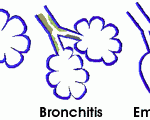
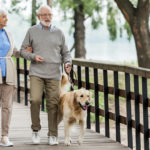
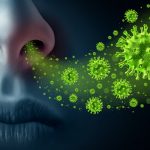
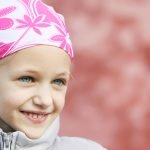




I have missed parts 1, 2 & 3
I have missed parts 1, 2 & 3 on the immune system – is it possible to get them from you?
Thanks
Pierre
Hi Pierre,
See the links just
Hi Pierre,
See the links just above the footnotes.
Thanks!
Have you heard of silversol?
Have you heard of silversol? New technology of producing silver bound inside a water molecule.
Since that brand name was
Since that brand name was mentioned in the article, it would seem that he has.
O RLY? inside a molecule?
O RLY? inside a molecule?
My dog was just diagnosed
My dog was just diagnosed with GIST. The tumor was found during an operation to remove an overlarge spleen. We are treating with natural remedies including Blood Root. Would you have any suggestions. Thanks, she is a part of the family and a great companion.
Marvin
Marvin, I would try Essiac
Marvin, I would try Essiac tea. It seems to have good results for tumors and cancer and can be given to pets.
Jon, there are a couple
Jon, there are a couple errors on this article. The picture of the Blue Man you have on here is Paul Karason, not Stan Jones. Stan jones was a politician who also had argyra. And also, in paul Karason's interview on Oprah, he said that he didn't turn blue from drinking colloidal silver, (he said it was at least 10 ounces or more daily that he drank) but he said it wasn't until he started applying it to his face that he gradually (over a 2 to 3 month period) started turning blue. So, according to Paul, it appears that applying high concentrations of colloidal silver on your skin poses a greater risk of argyra than ingesting it. Here is the link to that interview, it is at around 4:50 in the video that he says this. http://www.youtube.com/watch?v=Md2vqARiMJs
Hi Brenda:
You are correct.
Hi Brenda:
You are correct. We used the wrong picture to illustrate Jon’s article. We have replaced the picture of Paul Karson with a picture of Stan Jones to match the text in Jon’s article. Thank you for bringing it to our attention.
Hi Jon, Please see the 20
Hi Jon, Please see the 20 pages or so I have written on just the safety of "colloidal silver". It turns out there is actually more than enough evidence to demonstrate the safety and absence of argyria risk for "colloidal silver" that meets certain criteria: If you: 1. Follow certain precautionary procedures listed in my book 2. Use the type of "colloidal silver" most people refer to when they say "colloidal silver" (i.e. made by electrolysis) 3. Use it at less than 15PPM 4. Use it only if it is visibly clear, which indicates a particle size portion of roughly less than 100 nanometers in size. That is the cutoff where CS turns from clear to light yellow. (Particles make up about 10% of the total mass of silver. Dissolved ions (Ag+) make up about 90% of the mass. Only the particles contribute to the color). 5. Do not exceed lifetime maximum intakes in line with those cited in my book through various toxicity studies, user surveys, epidemiological surveys, etc. If you do all that, then this qualifies as "proper use" of "properly made" colloidal silver. This carries essentially zero risk of argyria. Still, within these limits of "properly made" CS, I have reviewed 2 case reports of argyria. Both could have been avoided had they taken the necessary precautions (i.e. "proper use"). One of those two cases willfully developed argyria actually. All other reports of argyria to date do not fall within this definition of "properly made" and "properly used" CS. I am trying to standardize some technical language in this field, as their is no textbook on silver really. The book I have written will be totally reworked in the coming months, and will be the first truly accurate handbook on the subject…eventually. This is hugely a rough draft. But the safety section is actually relatively complete and accurate.
How effective is grapefruit
How effective is grapefruit seed extract against intestinal bacterial pathogens like klebsiella? What about capryllic acid?
Thanks
If you’re looking for a magic
If you’re looking for a magic bullet for klebsiella (noting that Jon Barron is not a fan of magic bullet approaches), your best bet is probably oil of oregano. As for grapefruit seed extract, it has become extremely difficult to find “certified” food grade organic grapefruit seed extract over the last couple of years. That’s why Jon dropped it from his Super ViraGon formula. Capryllic acid is not as strong as oil of oregano.
Many pathogens stop the body
Many pathogens stop the body’s production of b vitamins, which are important for numerous processes, including gut flora balance. Would it be wise to take b vitamins when on an herbal protocol to kill pathogens like c diff and klebsiella pneumonia in the gut? Zinc is alsooften ddepleted
Lastly, how long does a person stay on an herbal protocol? If someoneis prone to dysbiosis , should they always take a maintenance daily dose of oregano or an herbal blend?
And what would the dose of these herbs like capryllic acid and oregano be? Are they taken with food or empty stomach?
How many cfus of probiotics do u recommend?
Thanks
Without proper gut flora,
Without proper gut flora, these will be ongoing, unending questions. With proper gut flora, all of these problems should fade into the background. The emphasis should be on rebuilding the beneficial gut flora rather than trying to use multiple natural remedies to constantly be fighting a rear guard action.
Is nutritional yeast
Is nutritional yeast beneficial to take if one has dysbiosis (the beta glucans support immunity and is a good source of b vit) or would this make dysbiosis worse?
You are undermining your
You are undermining your credibility by pushing an alkaline diet. The reason people feel better on an alkaline diet is because it eliminates processed food and includes lots of vegetables, so of course you’re going to feel better.
You cannot alter your blood pH levels through dietary intake. This is because the body maintains its pH balance through homeostatic processes that function regardless of dietary intake and are in no way influenced by alkaline or acidic foods. The acid alkaline diet describes the body as having a pH level, which is often more acidic due to the bad foods people eat. However you do not have an overall body pH. Your stomach has a pH ranging from 1.35-3.5 and it needs this in order to be so acidic that it can digest the foods you eat. When alkaline foods are consumed they are digested in the stomach due to its acidic environment. The pH levels of these foods will not change the pH of your stomach, nor will they somehow alter the pH level of your blood. Trying to change the pH of your stomach or your blood through diet is impossible- as it simply won’t happen…EVER!
I enjoyed your write up on various anti-oxidants, and added some of the ones you suggested on your list after I researched what you had to say for myself. But after coming across this page where you promote an alkaline diet, I’m going to take more of what you say with a grain of salt. The scientific evidence is lacking to say the least. And this is coming from someone who is a big supporter of natural medicine. Even studies that are mixed on certain supplements I’ll still take them as long as they make me feel good and don’t cause any harm; in other words I give the benefit of the doubt. But when I see people pushing an alkaline diet, it makes me sad, because it makes the natural medicine community look like a bunch quacks to the mainstream; not that they are often right, but in this case they are.
Dear Mike:
Dear Mike:
Jon would agree with everything you said. However, you misread what Jon said and took a single sentence out of context—so, in effect, you’re arguing against something Jon did not say. Jon specifically did not refer to “blood” or “stomach” pH. What he refers to is “general body pH,” which is shorthand for something completely different. This is actually a complex topic, and Jon goes into it in some detail in “Lessons from the Miracle Doctors.” Here is an extract from that section of the book that should give you a better idea of what Jon is talking about.
“When proteins are metabolized in the body, they produce sulfuric acid and phosphoric acid; carbohydrates and fats produce acetic acid and lactic acid. Since these acids are poisonous to the body, they must be eliminated. Unfortunately, they can’t be eliminated as acids through the kidneys or large intestine as they would damage these organs. The way the body handles them is to neutralize them by converting them into acid salts by combining them with the minerals sodium, calcium, potassium, and magnesium. Of these, calcium is the most important.
“Now, here’s the key: your body uses a priority system if there are not enough available minerals to neutralize all of the acids present. Blood is at the top of the heap—your body will steal minerals from anywhere and everywhere before it will let your blood become too acidic. Remember, even a slight deviation in blood pH results in death.
“Saliva is at the bottom of the heap. Saliva is the first place your body steals minerals from to balance the blood. That’s why pH testing of saliva provides an early warning system for when you are becoming too acidic. At optimum health, your saliva will have a pH of 7.45, the same as your blood. At a pH of 6.5–7.0, you’ll find yourself frequently succumbing to colds and sickness. At 5.5 and lower, you can pretty much count on the fact that major disease has already taken hold. Virtually, all cancer patients test strongly acidic on a saliva pH test.
“Unfortunately, your saliva doesn’t contain a big reserve of minerals, so you soon run out. After extracting what it can from urine and soft tissues (creating a rich environment for the spread of cancer), your body turns to its great mineral bank—your bones. So, if your diet is too acid-forming (too much meat, dairy, simple carbohydrates, phosphoric acid, and sugars), your body will fairly quickly begin to leach calcium from your bones to balance the low pH and avoid death. In effect, your body says osteoporosis is preferable to death.”
Hope this introduction to the topic gives you a better understanding of how diet impacts pH.
Check out Mark Sisson’s take
Check out Mark Sisson’s take on on the alkaline diet.
“And find ways to reduce
“And find ways to reduce stress — mediation, ” (meditation?)
Meditation is indeed of huge value – if you can do it !
Practicing it is extremely discouraging – however I found an instant way to produce the same result from use of the technology invented by Bill Harris – Holosync. Not meditation,but puts the brain into a meditative state in a few minutes. Worked well for me.
These articles by Jon are simply amazing. Very many thanks for such a wonderful web site.
I have been diagnosed with
I have been diagnosed with rosacea causing inflamed pustules on the face. I have used both allopathic medicines and natural internal and external remedies. I am back to taking antibiotics because it came back worse it seems. All the gels, cremes prescribed have some antibiotic in them as well. I hate taking them. Has there been any success fighting clearing up this auto-immune problem holistically? I would like to give it another serious try. I do believe I need to improve my immune system.
Thank you for this site.
The best way to use this site
The best way to use this site is to search on your topic and see the list of articles we have on it. As for natural remedies for rosacea, I found this: http://www.jonbarron.org/article/mites-and-rosacea. This is a must read too: http://www.jonbarron.org/anti-aging/natural-skin-health
My 21month old son has
My 21month old son has recurrent urinary tract infections. He is infected with klebsiell pneumoniae. Can any of the above remedies be given to a baby?
Jon Barron’s formulas are not
Jon Barron’s formulas are not designed for children, although some people have successfully used some of them with children. In general, the dosage recommended on the labels is for a 150 lb adult. When parents have used the formulas with children, they have adjusted accordingly. A 75 lb child gets a half dose. A 30 lb child gets a 1/5 dose. Etc. The bottom line is that before using any supplement with a child, check with your pediatrician.
Toxic Poison Alert!
Toxic Poison Alert!
In your article Anatomy and Physiology of the Immune System,
Part 4, there is a list of immunomodulators.
One of the items on that list is Wolfsbane? Monkshood (aconitum) which is a dangerous and deadly poison even in very small amounts. There have been many people who have died from taking Chinese herbal preparations that include this ingredient.
Jon was referring to its use
Jon was referring to its use as a homeopathic ingredient, where toxicity is not an issue. However, to avoid confusion, we have removed it from the list of immunomodulators.
Hello, in the article you
Hello, in the article you mention a few things you take while traveling. I was wondering what brand or where you get your olive leaf extract and oil of orgegano. Also what is AHCC? You mentioned your garlic based liquid formula. Do you sell this or is there anyway I can get your recipe? Thanks 🙂
Are you looking for this?
Are you looking for this? http://www.baselinenutritionals.com/products/super-viragon.php